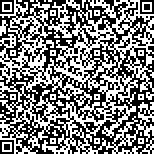下载中心
优秀审稿专家
优秀论文
相关链接
摘要

地理要素的时空变化分析对于了解和掌握地表的规律性有着重要的作用。利用地面站点观测、实地调查等传统方式获取数据,对地理要素进行时空变化分析是最常用的方法。但该类方法往往表现的是“点尺度”观测,不能在大尺度情况下准确地反映地表的时空变化信息。遥感卫星能以一定的时间间隔获得空间连续的对地“面尺度”观测数据,然而其特定的空间和时间分辨率使其获取的地表信息仍十分有限。同时地表的空间异质性和个别地表短时间内的快速变化,使得利用遥感数据对地理要素进行时空变化分析时,时空变化分析结果会随观测尺度而发生改变。本文从空间尺度和时间尺度两方面综述遥感数据时空尺度对地理要素的时空变化分析产生的影响和原因,并针对这些问题总结了减小时空尺度对结果不确定性影响的现行方法。可以通过多源遥感协同观测和反演、尺度转换、空间建模等方法减小空间尺度引起的不确定性;通过联合多时相遥感数据的方法减小时间尺度引起的不确定性。在实际应用中,应根据所观测地理要素的实际情况,综合分析选择合适的方法。
The detection of the changes in surface parameters is important to understand the regularity of the Earth's surface. Traditional data sources, such as in situ stations and field observations, have been extensively used to analyze the spatiotemporal changes in geographic parameters. However, this kind of data only provides information at "point scales," which cannot comprehensively reflect the spatiotemporal change information of land surfaces. Remote sensing provides a practical means of spatially and continuously obtaining the land surface information at regular intervals. However, the achievable information remains limited by specific spatial and temporal resolutions. Furthermore, results of change detection are typically inconsistent when different remote sensing data are used because of the heterogeneities and seasonal change in land surfaces. This study reviewed the causes and effects of spatial and temporal scales on the change detection of land surface parameters. The methods for reducing the uncertainty of change detection results are summarized.
Spatial scale involves the size of the spatial extent and spatial resolution. Similarly, temporal scale partially refers to the length of time range and temporal resolution. The features of the surface landscape are complexity, heterogeneity, and fragmentation. Consequently, the geographic entity exists at a specific spatial and temporal frame. Thus, the completeness of the acquired surface information depends on the spatial and temporal scales of remote sensing data. The geographic elements, which are homogeneous on a scale, may be heterogeneous on another scale. Generally, the remote sensing data at large pixel scales frequently combine the detailed information contained in small pixel scales. Low temporal resolution can result in the inability to capture the rapid changes in land surfaces.
For the uncertainty caused by spatial scale, the methods for reducing such kind of effects include multisource remote sensing collaborative observation and inversion, scale conversion, and spatial modeling. For the temporal scale, the methods for reducing such kind of effect are mainly focused on combining multitemporal remote sensing data. The advantages and disadvantages of these methods in practical applications were analyzed in this study.
Although many scholars have developed methods for reducing the influence of spatiotemporal scale on the change detection of geographic elements, a universal method is difficult to establish given the contradiction between the spatially and temporally varying characteristics of geographic elements and the nature of remote sensing data. However, these impacts can be minimized by selecting appropriate observation scales and improving the algorithms based on the characteristics of surface parameters. With the diversity of high-quality satellite data and the improvement of the algorithms, the uncertainties of change detection results can be reduced.

